|
Parameter |
Acceptable findings |
Significance |
|
inter-incisive
distances |
over 3 cm
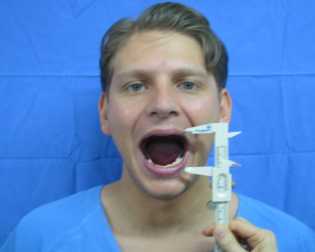
|
there is room enough to position the blade between
the
superior
and
inferior
dental arcade |
|
lenght of the
superior
incisives |
short
incisives |
long incisives:
the laryngoscope blade is oriented cephalad
|
|
mallampati
test
classificaltion |
less or equal to II |
small tongue in relationship
to the oropharynx
|
|
palate
anatomy |
must not be too narrow,
too straigh or too high arched |
a
narrow palate decrease the oropharynx volume-less room for the
blade and endotracheal tube
|
|
situation of
maxilar
and
mandibular
incisives during the
normal
closure of the mandible
top
|
maxilar
teeth do not pass over the
line of the mandibular ones
(evaluation in
lateral
position)
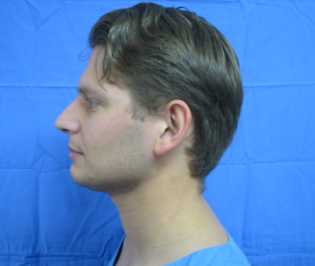
|
maxilar
arcade
anterior
to the
mandibular
teeth (protusion of the
superior
arcade): the blade follows a cephalad diretion
|
|
voluntary protusion
of the mandibule
|
mandibular
teeth pass
over
the
maxilar
ones,
(lateral
position)
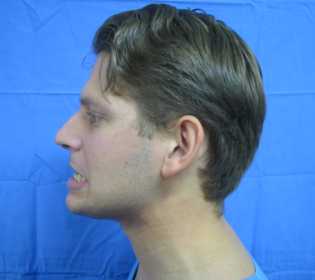
|
motility of the temporomandibular joint: allows
anterior
dislodgement
of the mandible during laringoscopy |
|
thyromental distance
top
|
3 finger breadths, 6 cm in adults
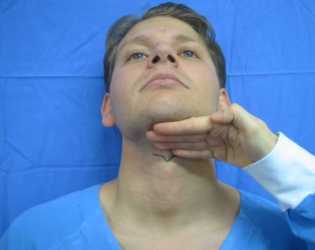
|
if this thyromental distance is
short (< 3 finger breadths,
or < 6 cm in adults)
the laryngeal
axis makes a more acute angle with the pharyngeal axis, and it
will be difficult to achieve alignment |
|
check neck extension
on to the chest
top
|
flexion of the neck
over the thorax with 35º
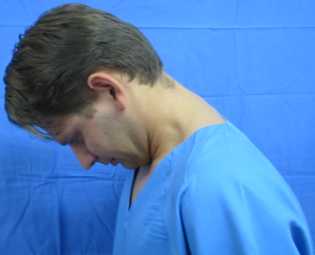
extension of the head over
the neck of 80º
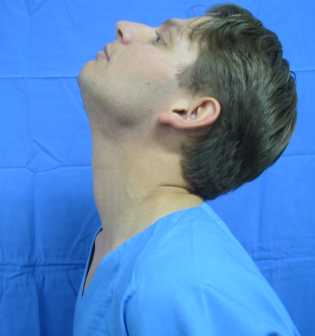
|
limitation of neck extension
(< 30
degrees) may interfere with the sniffing position and limit the
laryngoscopic view |
|
mandibular
space complacency
|
digitial
depression is possible
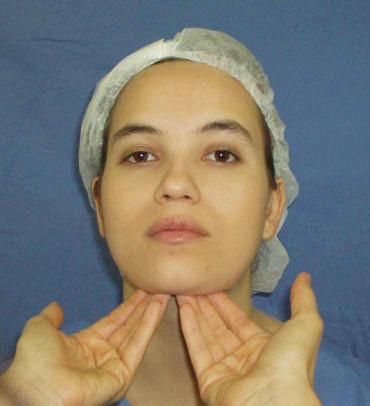
|
check if the tongue fits the
mandibular
gap during laringoscopy |
|
neck
lenght
|
subjective
evaluation |
a
short
neck difficults the right alignent of the axis during
laryngoscopy
|
|
wideness of the
neck |
subjective evaluation |
a
gross neck makes difficult the alignement of the axis during
laryngoscopy |